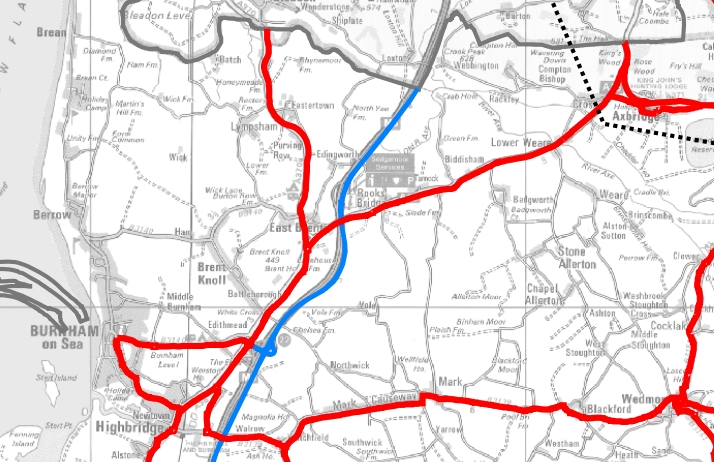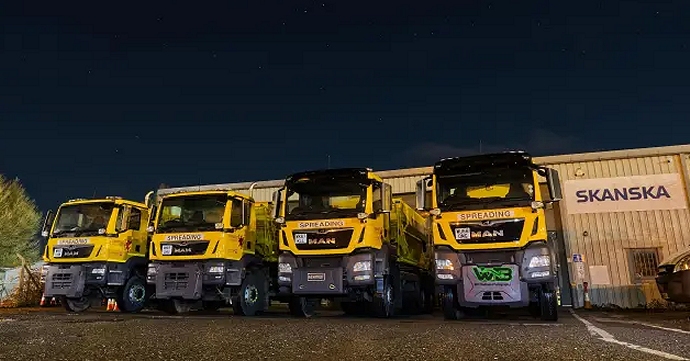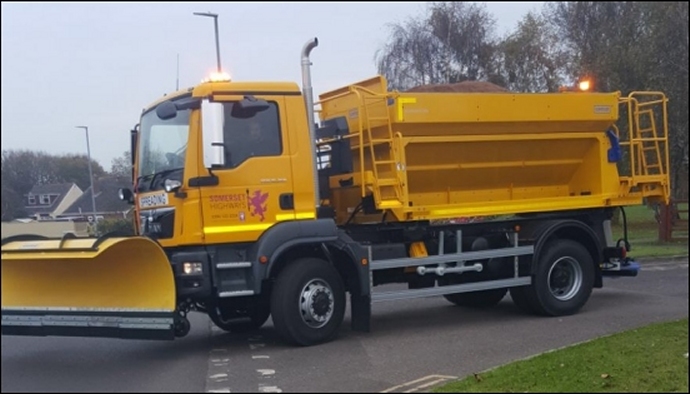Somerset County Council says its priority is to keep the busiest roads across the area clear whenever ice or snow arrives as it confirms which routes in the Burnham-On-Sea and Highbridge area that will be gritted this winter.
The priority for the 23 gritters in Somerset is ‘roads that link major towns, villages and communities on high ground and the important routes across the County for long distance travel’, it says.
The authority adds that its salt barns across Somerset are “fully stocked” and that over a fifth of Somerset’s roads will be treated this winter, as shown in red on the map here.
In the Burnham-On-Sea area, the M5 through our area will be gritted as normal by National Highways South West, formerly Highways England.
Queen’s Drive, Love Lane, Oxford Street, Burnham Road and Highbridge Road and the A38 to the M5 junction at Edithmead are also on the gritting map, shown below in red.

The main A38 / A370 from Highbridge to East Brent and north to Weston is on the map to be gritted as well. The B3139 and Causeway between Mark and Wedmore is also included, as is the A38 between Rooksbridge and Axbridge.
Last year, the council says its fleet of gritters went out on 66 occasions when freezing temperatures were forecast, covering 70,200 miles help prevent ice forming with 1,842 route actions in total.
This winter, the fleet is being bolstered with 20 new snow blowers, four new snow ploughs and there are three extra weather stations to signal cold weather warnings.
Highbridge County Councillor John Woodman, who is Somerset County Council’s Cabinet Member for Highways, says: “Our dedicated teams are ready to spring into action when needed after working hard throughout the year to make sure our salt is stocked and our equipment is checked.”
“Be assured they’re checking the forecasts every day to ensure gritters go out whenever road surface temperatures drop, and frost or snow is anticipated.”

He adds: “We carry out gritting when road surface temperatures are predicted to drop below 1°C and ice or snow is expected. Precautionary gritting normally takes place before the formation of ice – so that generally means our teams are out in the evening or early morning.”
“In the event of snow, we have established plans in place, working alongside the emergency services and partners to clear the network as quickly as possible. We can equip our gritters with snowploughs and have arrangements with farmers and snowplough operators who are employed to clear snow on our behalf. We prioritise our primary network and move on to clear our secondary and minor networks as resources allow.”
Responding to criticism from some that not enough roads are gritted, he adds: “We can’t treat every road, as there aren’t enough gritters, drivers and depot staff to make this cost-efficient.”
“However, we are carrying on our work with parish councils to fill roadside grit bins on request and are continuing to run a community-led snow warden scheme.”







